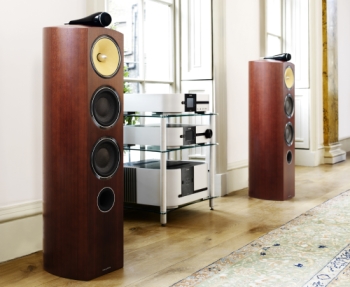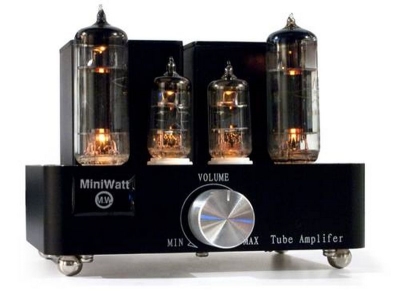Amplifier for acoustic system
We independently test the products and technologies that we recommend.
By and large, the choice of a transistor amplifier depends on two things: firstly, where it will be used and secondly, with what.
 |
|
When choosing an amplifier, first of all, it is worth considering the necessary number of ports and floor space |
The first is the room, the room in which to sound. The larger it is, the more powerful the amplifier should be. Here it is worth thinking about your own preferences for the style of music and the volume of its playback. On the other hand, the power of the device should not exceed the recommended power of the speakers connected to it. In addition, acoustic systems have such a parameter as sensitivity. With the same signal, acoustics with a sensitivity of 92 decibels sound, according to a subjective assessment, two times louder than acoustics with a sensitivity of 87 decibels - this parameter should also be paid attention to when choosing.
Now let's move on to the second point. It is worth mentally, or better - in writing, to list the components that will be connected to the amplifier: CD player, media player, vinyl disc player, headphones, etc. For all this, input switching must be provided, namely, a sufficient number of inputs compatible with the output of each source.
Record player - on a special account
In particular, for a vinyl disc player, our amplifier must have a built-in preamplifier-corrector of the MM or MC type (this is the name of the device that matches and amplifies the signal from the pickup head). Such an input is marked with the word "phono". In no case should you connect anything other than a vinyl player to it - this input is a hundred times more sensitive than the others, you risk damaging the amplifier, and possibly the acoustics! The rest of the inputs are labeled differently, but they are designed, in general, for the same signal range, if you mix them up - it's okay.
Possibility to remove excess
However, the input for the CD player, marked "CD", is often equipped with the "Direct" mode, that is, "Directly". This means that the signal from this input will not be processed by tone control circuits, high and low pass filters, switching, loudness, etc., but will go directly to the input so that the sound is minimally distorted. This is a useful feature that allows you to really feel the difference and get the most out of your equipment. By the way, all inputs are provided with the same function in some models - that is, there is a mode when the sound processing built into the amplifier is turned off and the system sounds as clear as possible.
Analog and digital
The analog sources listed above are usually connected to the amplifier with RCA connectors (better known as "tulips"). There is another type of analog connectors - more professional, XLR, balanced type. If any of your sources have such a switching option, it would be nice to use it. To do this, some amplifiers are equipped with a built-in DAC (digital-to-analog converter) and have a digital input - this is a coaxial or optical connector. Working with "digital" is preferable, especially if the built-in DAC is of high quality.
What is written in the passport
 |
|
The power of the amplifier must not exceed maximum speaker power |
But it is much more important to evaluate the quality of the amplifier itself. You can learn a lot about it from its technical specifications. Let's decipher some of them.
The most important parameter is the rated power. This is the maximum power level above which the "avalanche-like growth of distortion" begins - there is simply no point in making it louder, no pleasure. This indicator is usually twenty percent lower than other types of power - and different manufacturers can mention a great variety of them: musical, sinusoidal, maximum, peak, long-term - in any case, the largest of them should not exceed the recommended maximum power of your speakers. About which one more subtlety should be taken into account - their resistance (impedance).
For home acoustics, its impedance ranges from four to eight ohms. Pay attention to what resistance the power of the amplifier is indicated in the passport. At a four-ohm load, it is, as a rule, one and a half times more than for an eight-ohm load. There are amplifiers that are not designed to work with four-ohm speakers at all - give them only eight ohms. This is an important point of compatibility with speakers.
The next parameter is THD, the coefficient of non-linear distortion. For a qualitative model, it does not exceed tenths of a percent. The smaller it is, the better - but you should always remember that acoustic systems, with their speakers and built-in crossovers, according to the physics of the process, introduce much greater distortion into the signal.
Naturally, among the passport data there are many other important parameters, some of which need to be discussed in connection with the devices to which they are related. Deciphering all the parameters is an extensive subject, and if you have an interest in it, the Internet will help you.
 |
|
Tube amplifiers create a lot of problems: they weigh a lot, lamps burn out, beat, warm up for a long time, etc. |
Power switching
A little more about switching. Some amplifiers have several so-called switched sockets for powering other equipment - that is, you can get 220 volt power to the rest of the devices in your audio complex. It will occur when the amplifier is turned on. And when it turns off, everything will be de-energized. A handy feature, but it is worth paying attention to whether all components connected in this way turn off correctly when disconnected from the network? Purely electronic devices - for example, tuners - most likely, yes. And for devices such as a media player with a built-in hard drive, a CD player, a vinyl player, options are possible. For example, a vinyl disc stops with the stylus on the record - a mess. This point should be taken into account.
More amplifiers - good and different!
In the case when there is a desire to assemble a really high-quality stereo set, it is worth considering the transition from an integrated amplifier(the one in which everything is combined in one case) to a composite one. It, as a rule, consists of two, less often - three blocks: processing, regulators and all switching of signal sources are concentrated in the preamplifier. And the final amplifier is a concise unit (sometimes there are two of them, separately for the right and left channels), which is only responsible for amplifying the signal already generated in the preamplifier. As a rule, such a kit has more features and better parameters. However, as you know, there is no limit to perfection.
Read also:
How to choose a subwoofer?
What you need to know to choose a subwoofer for your stereo system or home theater.
Choosing stationary acoustics
If a pair of speakers is really chosen correctly, listeners are guaranteed to enjoy the sound.
Choosing shelf speakers
If an experienced tourist knows exactly what he needs, then it is easy for a beginner to get confused among the many models.







